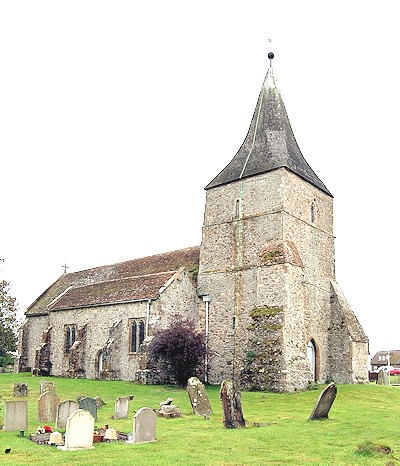St Mary the Virgin, St Mary in the Marsh
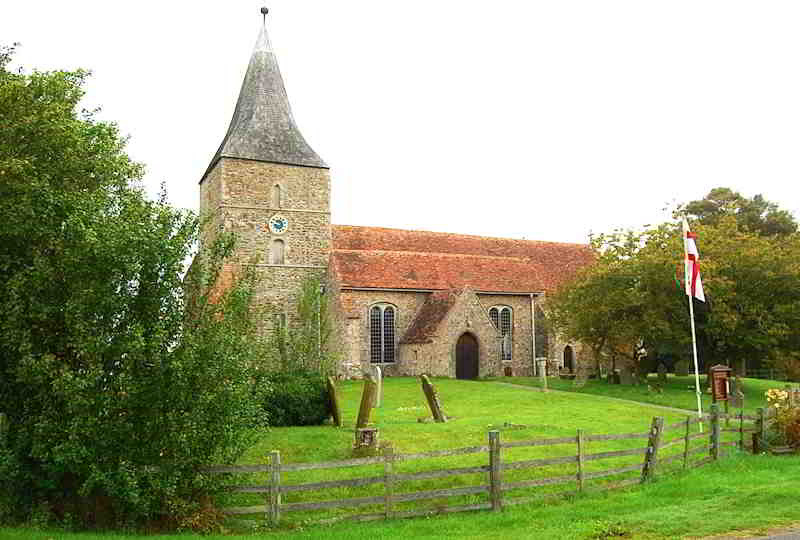
Church of St Mary the Virgin
The Church of St Mary the Virgin lies in the heart of St Mary in the Marsh, next to the local public house, The Star, and a few houses. The present church was built in the mid 12th century but it is probable that there was a Saxon church on the site originally known as "Siwold's Circe", which was probably built of wood.
After the Norman conquest, this was superseded by a stone church with a splendid Norman tower. This tower of Kentish ragstone, together with the west wall of the nave, are the oldest parts of the building and date from about 1150. The spire was not added to the tower until the mid fifteenth century, circa 1450.
Early in the thirteenth century, about 1220, the chancel of the Norman church was extended to the present east wall, and the north and south walls were pierced for the insertion of the Early English arches. The north and south narrow aisles were then added. At the east end of the north aisle was the chapel of St Michael.
Both altars were separated from the body of the aisles by coloured and gilded screens. The short moulded beam across the south aisle formed part of one of these wooden screens. The stone chancel arch which divided the chancel from the nave has been lost but it is not known at what date or for what reason. Under this arch there was a rood screen with a figure of the Crucified Lord upon the Cross.
On the south wall of the chancel are two stones seats, called sedilia, which were for the use of the deacon and sub-deacon in pre-Reformation times, when the ceremonial was long and elaborate. These seats are surmounted by hood moulds which terminate in interesting stone corbels, the one a grinning mask, the other, the tonsured head of a priest, all of Caen stone brought over by the Norman stonemasons to the ancient Cinque Port of New Romney by boat.
Eastwards, from the sedilia, will be seen two circular depressions in the stone work. These are piscinae or basins, used for the ceremonial washing of the priest's hands before the consecration of the Holy Elements, the second one for the ablution of the chalice after the mass. They both retain their original drain-holes so that water, used for so sacred a purpose, would flow down into consecrated ground. The piscinae are also under a chamfered hood mould, ending in daggerstops
The elegant thirteenth century pillar which divides the has the typical water-holding moulding of that period at the base. Thepiscinae and the sedilia are extremely well preserved and interesting examples of early thirteenth century work. The double drains are rare, and do not occur after 1300, when the Pope decreed that the celebrant at the Mass might drink the ablution just as is done in the Anglican church today.
The oak altar, with its four riddell posts, was fashioned by a local craftsman, the late Charles Link of Newchurch, in 1947. He had cut down the oak and seasoned it in his timber yard for some fifteen years. The altar and the posts are entirely wooden-pegged.
Above the altar, the five light east window, with its delicate tracery, dates from the fifteenth century and replaced an Early English lancet of three lights, the shafts however remain in their original position with their slender elegant pillars and moulded corbels and bases retaining their thirteenth century water-holding moulding.
On the north wall of the sanctuary will be seen a small rectangular piece of Caen stone which marks the original length of the chancel. On the sanctuary floor may be seen some of the old patterned encaustic tiles which cost 2%d (approx I new penny) per hundred in the thirteenth century.
The stone font near the south door, symbolic of a child's entry into the great Christian family, is of fourteenth century date and has a fine wooden Jacobean cover. Opposite, on the north wall, are the Royal Arms of III, which date from 1775.
There are only two brasses, to Matilda Jamys and her son William Gregory, the former dated 1499 and the later from 1502. Matilda has a butterfly wing head dress and William wears the typical long Henry VII dress.
Text courtesy of Anne Roper, Churchwarden 1903 - 1988
The church is open to visitors every day from 9.00am until dusk.
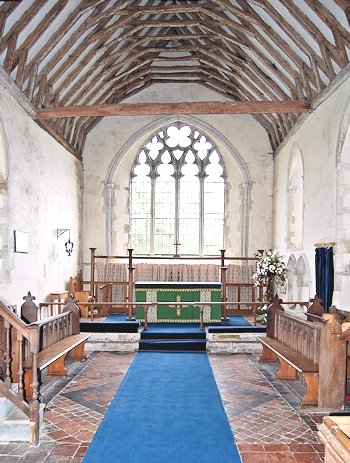
Edith Nesbit
Inside the church is a memorial plaque commemorating Edith Nesbit, author of "The Railway Children", who lived at St. Mary's Bay. She was buried in the churchyard where her grave is marked by a wooden grave marker made by second husband, Thomas Terry Tucker.
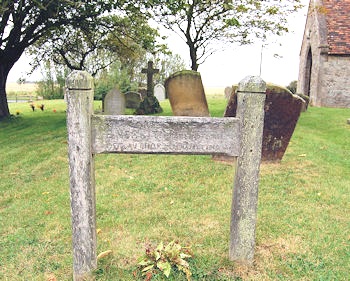
Edith Nesbit buried in the churchyard
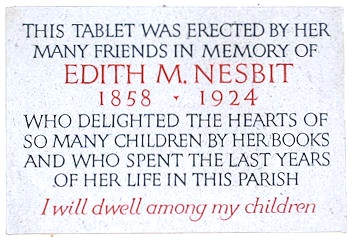
Plaque remembering Edith Nesbit


















